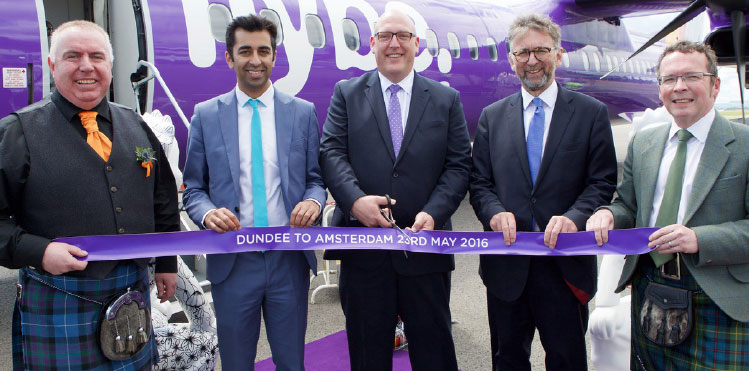Saad Hammad, the Flybe CEO talks to Airport Business
Saad Hammad, is the former CCO of easyJet, he is also a turnaround specialist who has led the transformation of Flybe as its CEO since 2013. Flybe is Europe’s largest regional airline, and the biggest domestic airline in the UK by far. But Hammad believes the UK Government is holding back the aviation industry and the wider UK economy.
“The Irish Government published a National Aviation Policy in 2015, with a clear set of actions to drive the development and growth of Ireland’s aviation sector, this totally contrasts with the UK where there is no coherent or holistic national aviation policy or action programme. The whole aviation industry – including our airport partners – should be arguing to have this corrected.”
High on Hammad’s agenda of issues is punitive Air Passenger Duty (APD). Again Hammad contrasts the UK position with Ireland, which has abolished APD along with a number of other European states: “APD is a barrier to regional development and a barrier to tourism, it needs to be ditched completely, or at the very least made more equitable. Instead it is levied disproportionately on regional flights – a typical domestic passenger can be charged up to 19 times the tax per-kilometre of a passenger on a long-haul flight.”
On another financial level Hammad says a “rail-is-good-aviation-is-bad” attitude pervades across much of Europe and that this “unscientific bias” creates some startling policy inequalities. “Funding of the HS2 high speed rail link in the UK amounts to some €55 billion, yet it will not connect London and Manchester for at least another 17 years. In the meantime, the Regional Air Connectivity Fund that does focus on start-up routes needs to be much bigger – this year the Fund contributed less than €9 million to start-up regional routes. It also needs to fund permanent connectivity, as well as additional frequency investments on existing regional air routes.”

Flybe’s Hammad (left): “The Regional Air Connectivity Fund contributed less than €9 million to start-up regional routes this year, whereas funding for the HS2 high speed rail link amounts to some €55 billion, yet it will not connect London and Manchester for at least another 17 years.”
Money aside, Hammad says the stalled decision-making process on runway capacity at either Heathrow or Gatwick has “dried up the provision of affordable slots for regional routes and those served by smaller aircraft – some guarantee needs to be made that these slots will be viably available, ensuring that a future hub airport in London is a truly national and European asset, rather than something built solely to serve UK south east-based passengers or global passengers connecting through the South East.”
In an incredibly radical move, Hammad has even made formal proposals to operate scheduled services from RAF Northolt (12km north of Heathrow) as an interim solution until a new runway is built. “This would give some of the immediate connectivity benefits of a new south east runway with none of the environmental disadvantages.”

May 23 2016: Flybe extends European connectivity for Dundee Airport, one of 11 Scottish airports operated by Highlands and Islands Airports Limited (HIAL). Featured in the ribbon cutting was Humza Yousaf (second left) the brand-new Minister for Transport Scotland and the Islands, and Inglis Lyon, Managing Director of HIAL (far right, kilted). Flybe is Europe’s largest regional airline with 214 routes serving 10 countries from 75 departure points covering 38 European airports. For this summer season the airline has launched 22 new routes, including eight new routes from a new base at Doncaster Sheffield Airport. A new route between Norwich and Exeter is the first to be operated under the UK Government’s Regional Air Connectivity Fund.







